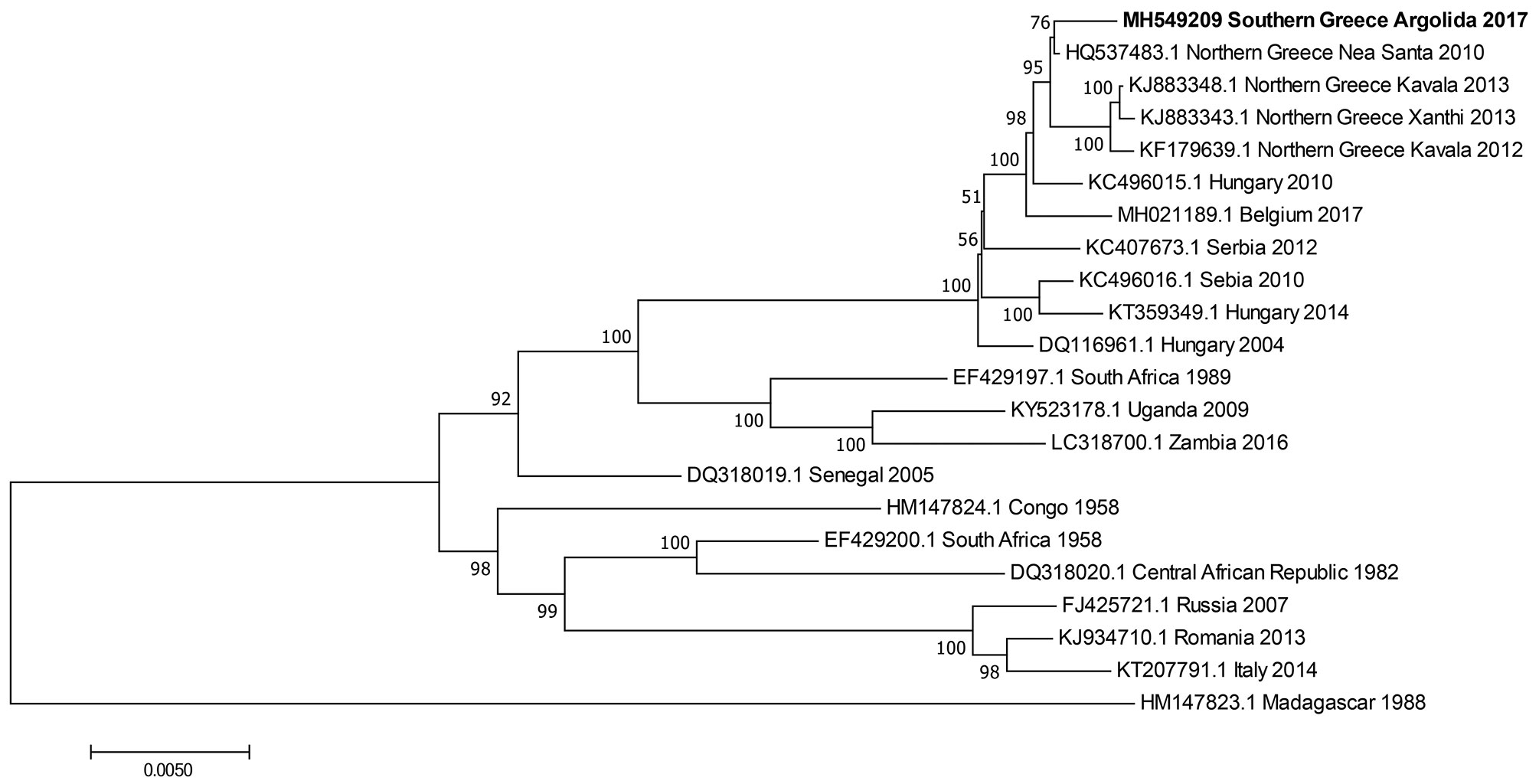Volume 25, Number 12—December 2019
Research Letter
Phylogenetic Analysis of Bird-Virulent West Nile Virus Strain, Greece
Figure

Figure. Phylogenetic tree of West Nile virus lineage 2 strains from a Eurasian magpie in Greece (bold) compared with reference strains. Each strain is listed by GenBank accession number, geographic origin, and collection date. Bootstrap values are shown as percentages at each tree node. Scale bar indicates substitutions per site.
Page created: November 18, 2019
Page updated: November 18, 2019
Page reviewed: November 18, 2019
The conclusions, findings, and opinions expressed by authors contributing to this journal do not necessarily reflect the official position of the U.S. Department of Health and Human Services, the Public Health Service, the Centers for Disease Control and Prevention, or the authors' affiliated institutions. Use of trade names is for identification only and does not imply endorsement by any of the groups named above.